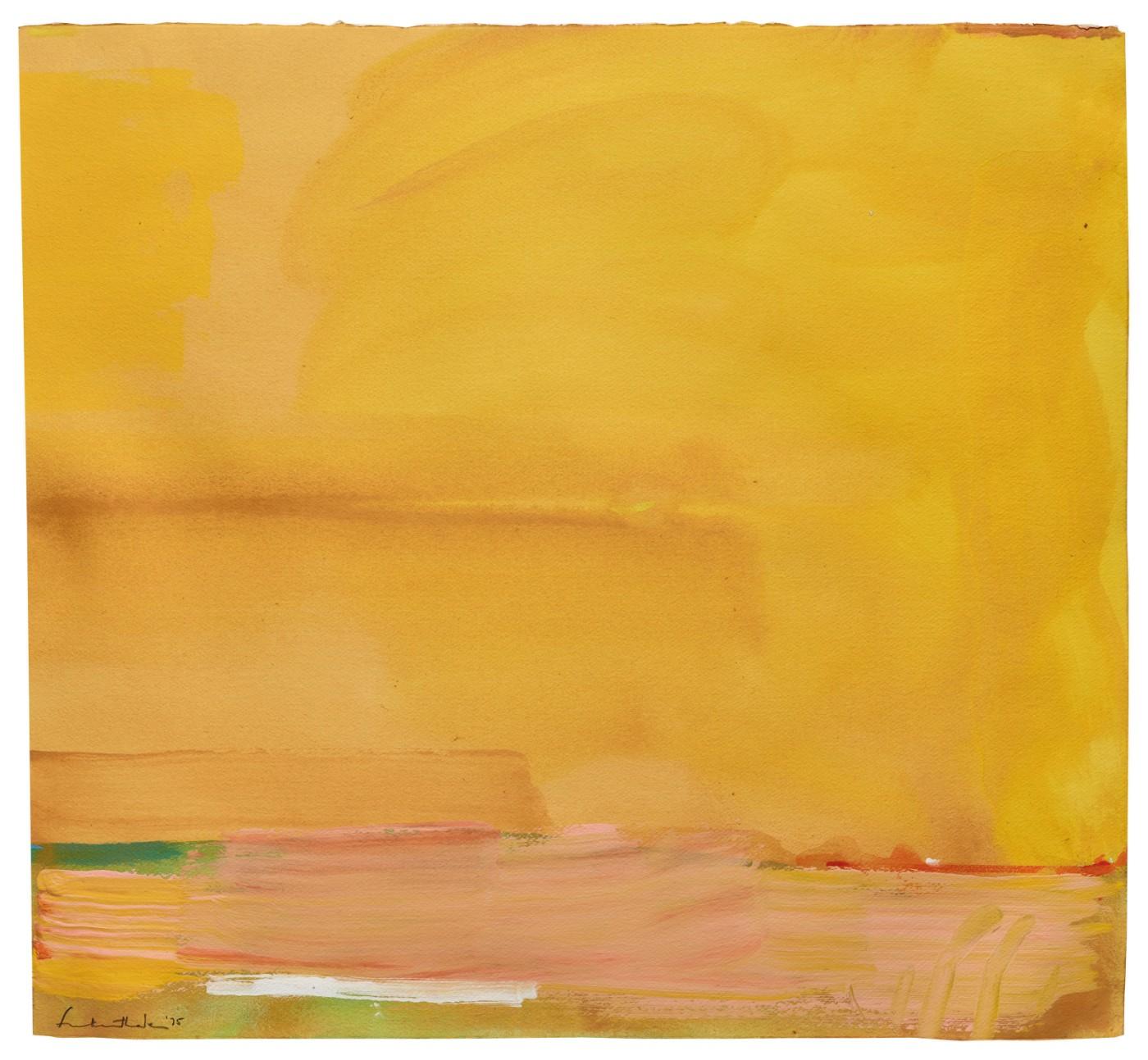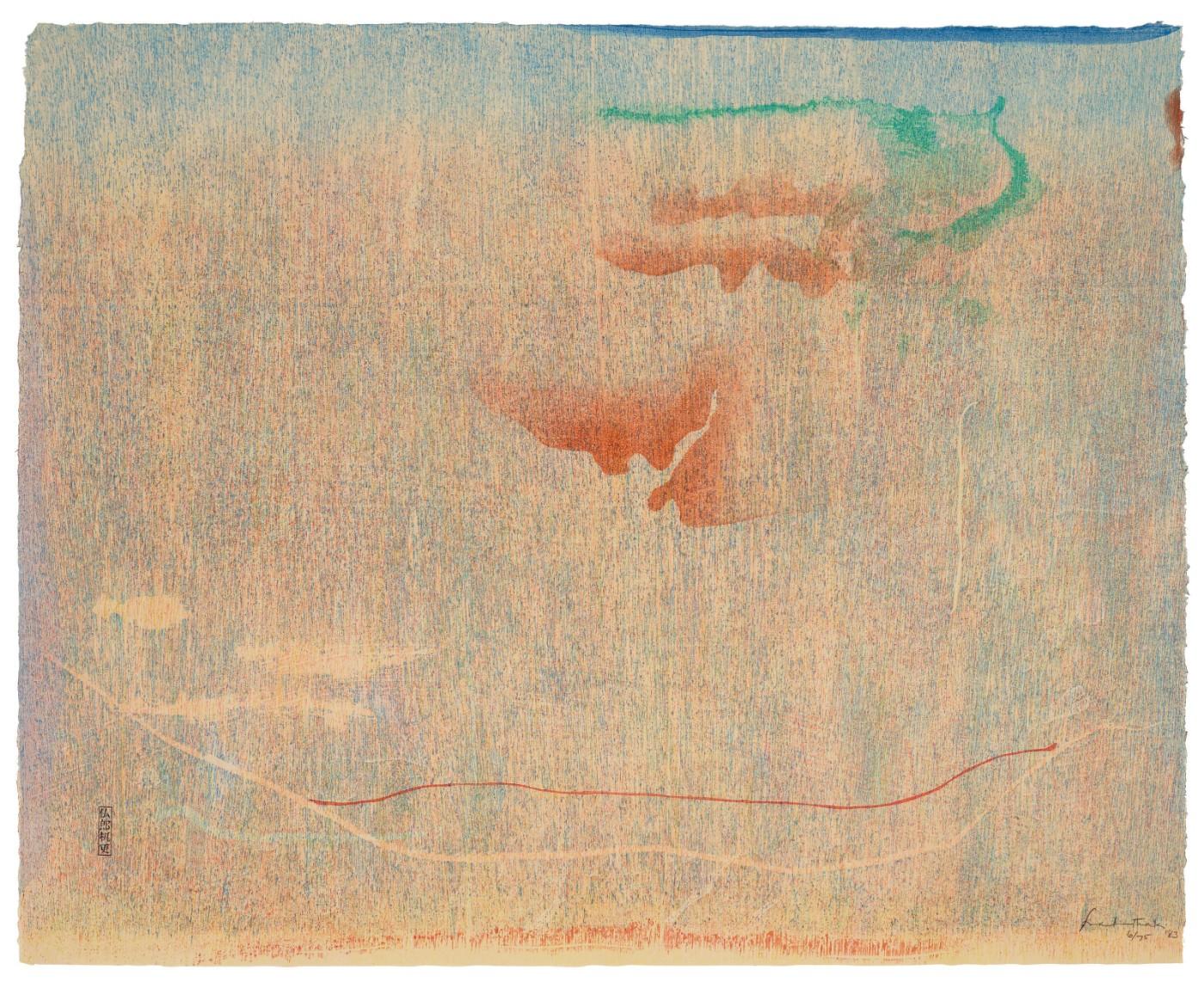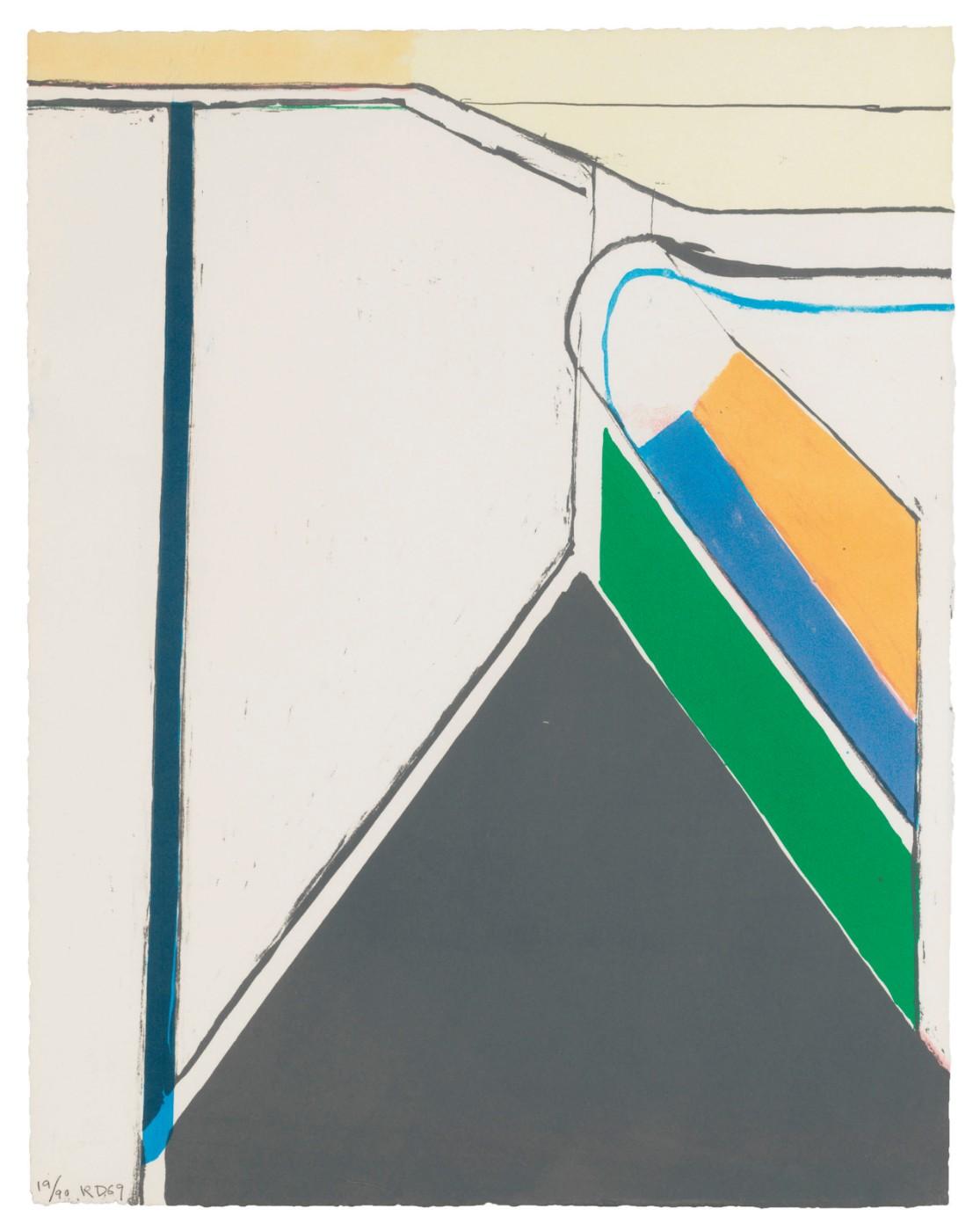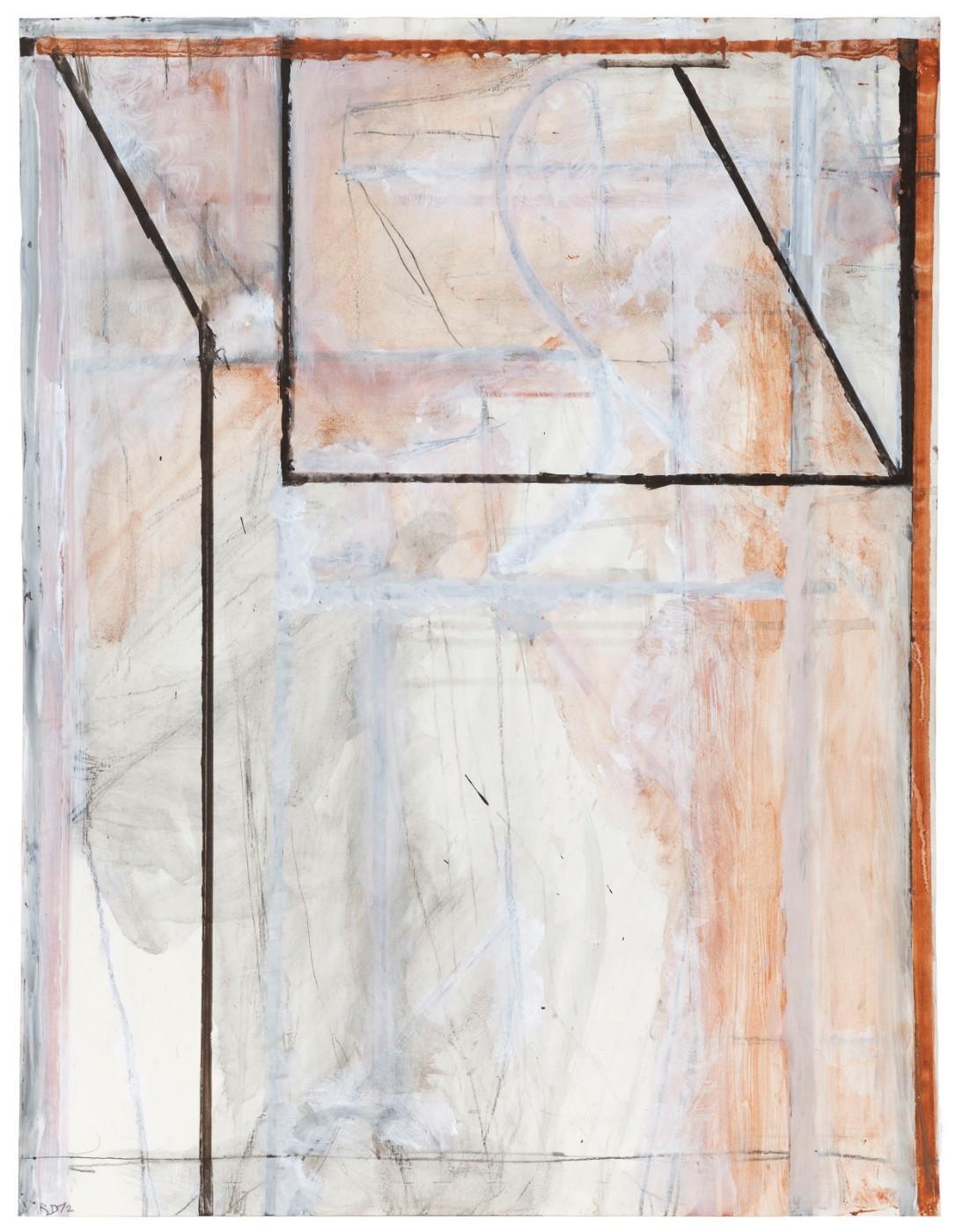Two works from Helen Frankenthaler also show how this artist's vision and aesthetic come through in a variety of media. Her Untitled painting from 1975 is a wash of colors and textures. The Cedar Hill woodcut (1983) offers the same opportunity to get lost in the expanse of the work, though the texture created by the woodcut is a different one. Even though both works are relatively small (two feet wide), they create abstract worlds for us to visually explore.
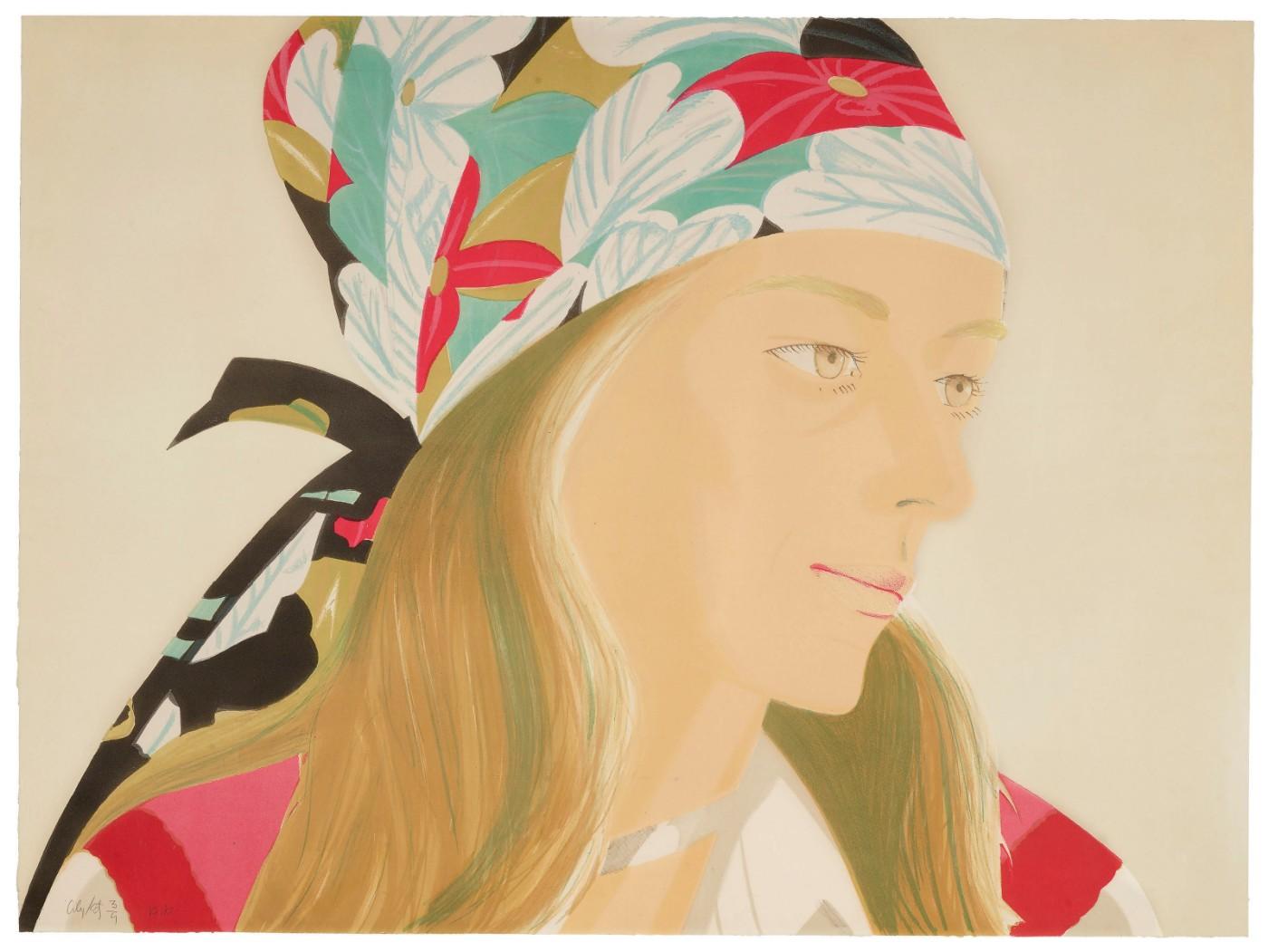
Alex Katz (b. 1927), Anne, 1973, lithograph in colors, on Arches paper, signed in pencil, numbered '3/4 P.P.' (a printer's proof, the edition was 83), co-published by Brooke Alexander, Inc. and Marlborough Graphics, Inc., New York. Sheet: 26 7/8 x 36 1/8 in. (683 x 918 mm.)
With two upcoming auctions, Christie's offers the unique opportunity to compare the artistic outputs of some modern masters. Contemporary Edition, on February 27, features a variety of prints from Joan Mitchell, Jasper Johns, Robert Rauschenberg and others. Their Post-War to Present sale, taking place the next day, offers singular works from some of the same artists. Many great artists that we associate with painting also worked as or with printmakers. While painting can be laborious and time-consuming, printmaking can offer painters a faster way to get a result that's similar in color and quality. Printmaking has its own complexities and complicated processes, but it can offer artists a more immediate result than say an oil painting, which some artists take years to complete. Printmaking can also be a welcome way to increase output and thus income. By creating more works at a lower price-point, artists can expand their collecting audience.
Alex Katz's lithograph Anne (1973, above), is one of several depictions of the poet Anne Waldman in his oeuvre. The print, like his painting Study for Portrait of Neil Welliver (1964), showcases the artist's signature figurative subject matter and interest in large blocks of color. While Anne is slightly smaller in scale, the portrait in print carries just as much intriguing character as Study for Portrait of Neil Welliver.
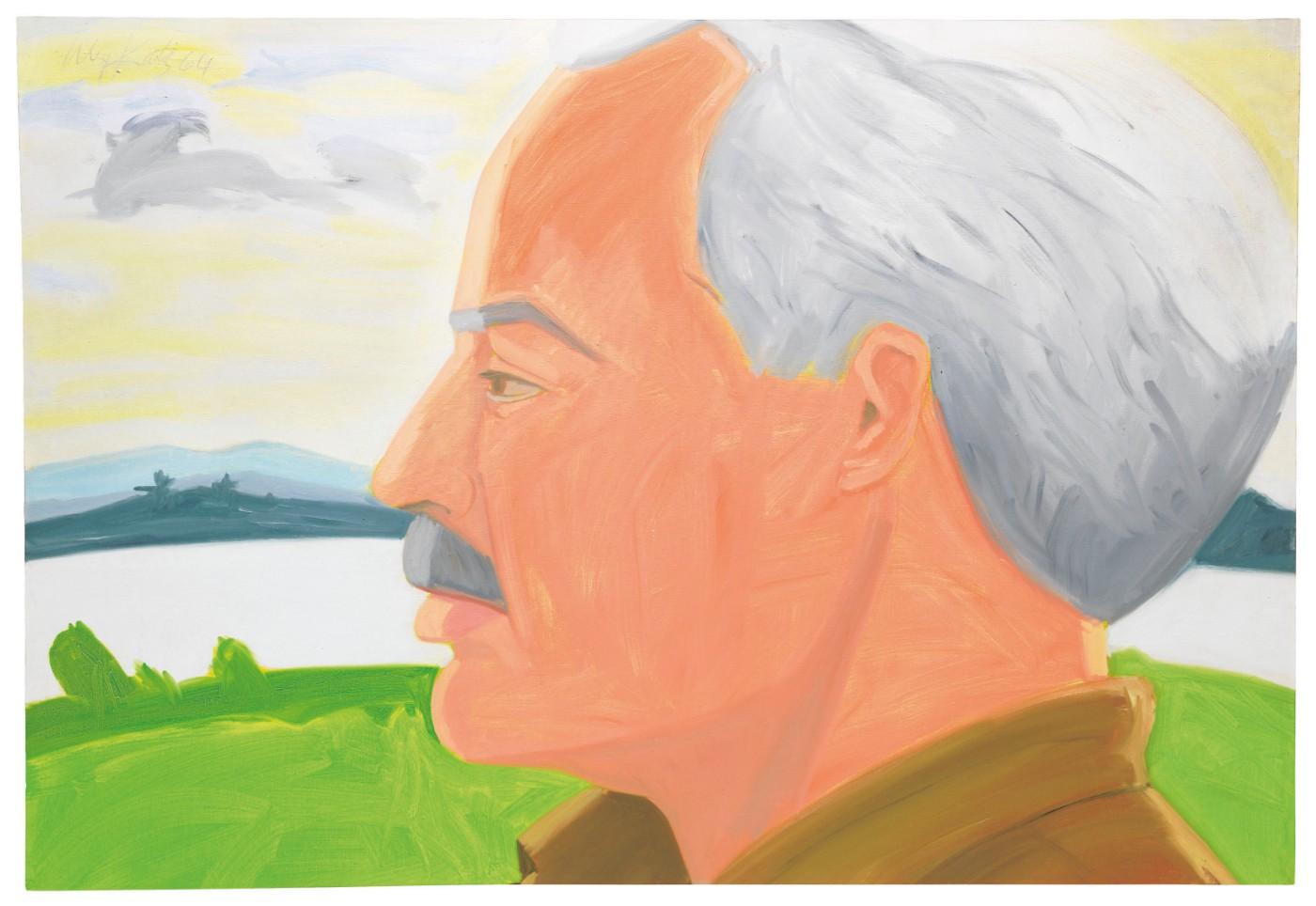
Alex Katz (b. 1927), Study for Portrait of Neil Welliver, 1964, incised with the artist's signature and dated 'Alex Katz 64' (upper left), oil on canvas, 33 x 48 3/8 in. (83.8 x 122.9 cm.)
Richard Diebenkorn's progression pushing the limits of abstraction is evidenced in two of his works. Untitled (Ocean Park) (1969) strongly suggests architectural details, with clean lines and solid color blocks off-setting a largely white composition. In his 1972 Untitled work in gouache, many of the same qualities are present, but the result is completely different. His color palette is still muted, but much more texture and variety is introduced. The dark lines he use create structure, though what that structure is has become less clear,




